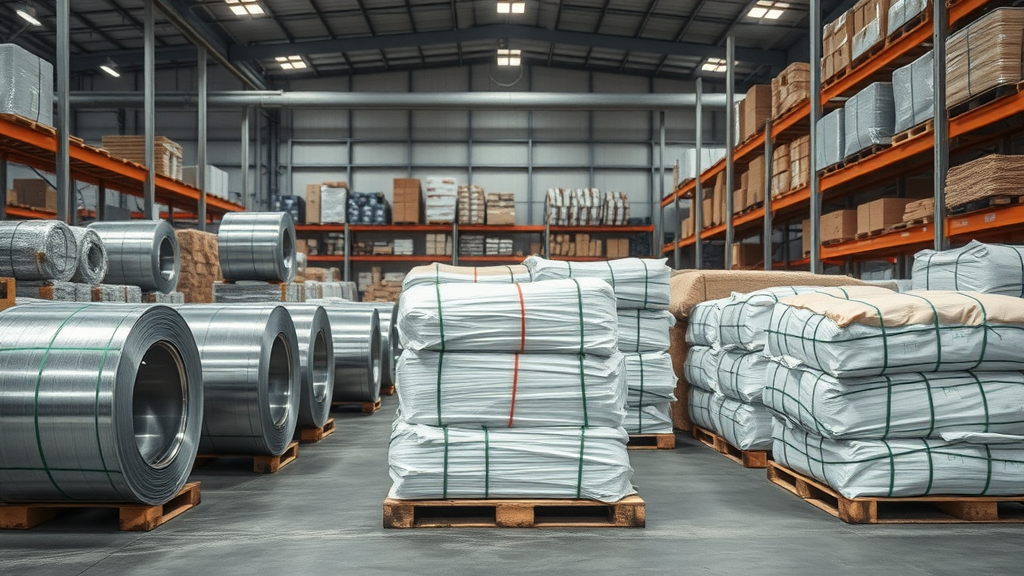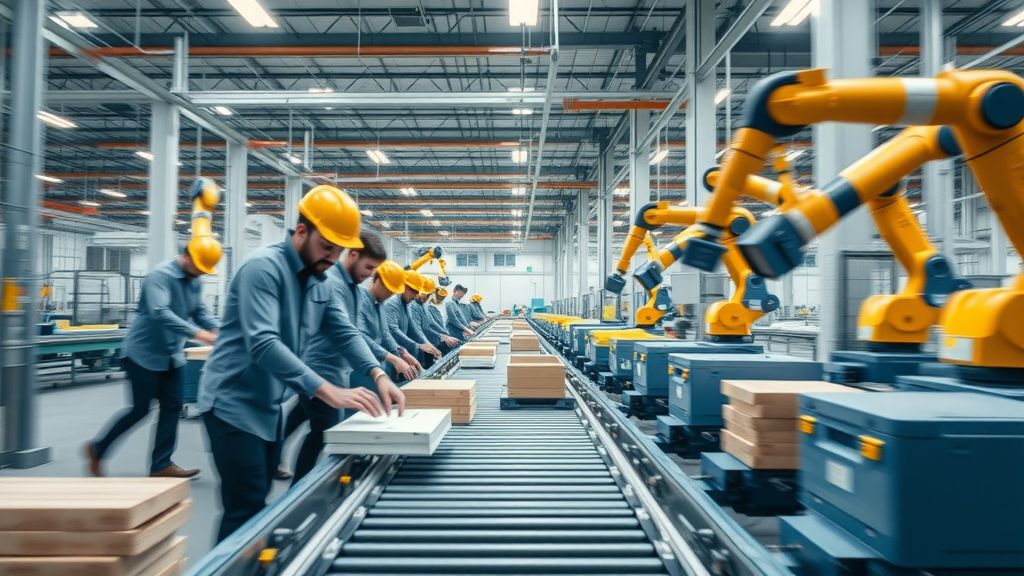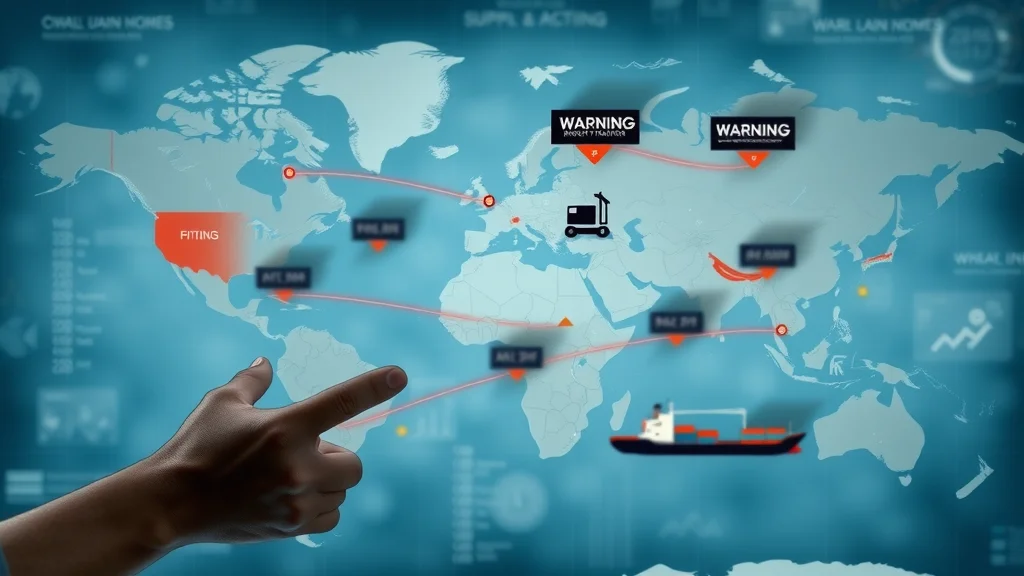Did you know? In the last decade, raw materials have taken up as much as 60% of total production costs in some industries, putting even established manufacturers’ profitability at risk. If your cost of raw materials is quietly eating away at your margins, you’re not alone—this guide gives you practical solutions for combating rising expenses and protecting your bottom line.
A Stark Reality: The Impact of Cost of Raw Materials on Margins
"In the last decade, raw materials have accounted for up to 60% of total production costs in some industries—threatening profitability for even established manufacturers." – Industry Insight Report
The raw material and direct material cost surge is eroding manufacturing margins
Supply chain disruptions intensify cost fluctuations for raw materials
Manufacturers need actionable strategies to rein in direct materials expenses

The cost of raw materials has emerged as a crucial factor in determining profit margins for manufacturers around the globe. As global supply chains become increasingly volatile, manufacturers see margins thinning due to unpredictable material cost spikes. Not only do raw materials and direct material costs directly impact the cost of goods sold, but variable costs like labor costs and overhead are also affected due to inefficiencies caused by fluctuating inputs. The ongoing challenges—commodity price surges, disrupted logistics, and extended lead times—require businesses to rethink how they manage and control material expenses. In this environment, an inability to keep materials cost in check doesn’t just hurt day-to-day profitability; it can make the difference between a thriving operation and financial strain.
Adopting smarter procurement practices, tracking direct material cost trends, and leveraging advanced technology can provide a strategic advantage. This article dives into exactly what you need to know about the cost of raw materials—offering clear examples, practical calculation methods, and proven strategies that leading manufacturers already use to master their materials cost. If you’re ready to safeguard your margins and drive more predictable profitability, keep reading for the latest industry insights and actionable steps.
As you explore ways to manage material expenses, it's also important to stay updated on external factors that can influence your costs. For instance, understanding the latest tariff updates and trade policy changes can help you anticipate shifts in raw material pricing and adjust your procurement strategies accordingly.
What You'll Learn About Cost of Raw Materials
How to accurately determine your cost of raw materials
Examples clarifying materials cost in different industries
Current insights on raw material prices worldwide
Proven techniques for managing and reducing materials cost
Best practices for implementing standard costing of raw materials
Defining Cost of Raw Materials and Its Strategic Importance
Understanding Raw Material, Direct Material, and Materials Cost

Raw materials are the basic, unprocessed inputs required to create finished goods—think steel for cars, cotton for textiles, or silicon wafers for electronics. The sum of these items purchased during an accounting period, plus associated costs like transport, typically forms the direct material cost component of your cost of goods sold calculation. Direct materials are those items that become an integral part of the final product and can be directly traced to it. In contrast, indirect material costs relate to items used in the production process but not incorporated into the finished product—like lubricants, cleaning supplies, or small tools.
When it comes to materials cost on your balance sheet or income statement, these typically include direct and indirect costs, forming a base for evaluating overall production cost. Understanding the difference between raw material costs and other associated variable costs (like labor costs or manufacturing overhead) clarifies opportunities for savings and process improvements, directly affecting your profitability.
For accounting clarity and improved cost control, businesses must accurately allocate all production costs—including direct and indirect materials—across the final product. Consistent tracking ensures only eligible costs include direct production inputs, maintaining financial compliance and illuminating hidden inefficiencies. By mastering the distinctions between raw material, direct material, and materials cost, manufacturers position themselves to optimize inventory, reduce waste, and boost finished goods output while keeping budgets tightly managed.
Why the Cost of Raw Materials Matters for Your Business
The cost of raw materials is a powerful factor shaping your company's competitiveness and financial health. Because it often makes up the largest share of direct variable production costs, any increase in raw material price can swiftly erode margins—sometimes before you have a chance to adjust finished product prices. This is especially challenging in industries where customers are price-sensitive and where raw material price shifts are frequent and unpredictable.
A firm grasp of your total materials cost doesn’t just help with pricing and performance tracking; it becomes a tool for strategic decision-making. Forward-thinking companies use real-time direct material data to identify cost-saving opportunities, respond quickly to supplier issues, and negotiate better contracts. Ultimately, being proactive about material cost management can spell the difference between outperforming competition and struggling to sustain profitability.
As you consider how raw materials influence your operations, remember that materials include direct and indirect inputs. Knowing how each affects your balance sheet empowers managers to allocate resources efficiently, tackle inefficiencies in the production process, and safeguard the business against unpredictable commodity price movements.
Impact on Direct and Indirect Material Cost
"Controlling material cost is not just about accounting—it’s a strategic priority that shapes your competitiveness." – Operations Manager, Leading Auto Parts Supplier
Direct material costs refer to raw materials that become a tangible part of your final goods sold—such as aluminum used in finished products or microchips for electronics. These costs are recorded as a current asset (inventory) until the conversion to finished goods and eventual sale—then shown as cost of goods sold on your income statement. Meanwhile, indirect material costs (like adhesives or protective gear) are vital to the production process but can’t be easily traced to individual finished goods.
Overseeing both cost categories is critical. High direct and indirect material costs can inflate your production cost, eat into profit margins, and hamper cash flow. Manufacturers optimizing for lean processes and integrated supply management often implement separate tracking for direct and indirect material spend, aiming to cut redundancy, reduce waste, and improve efficiency. These efforts directly impact financial reporting and production performance, helping businesses remain agile in the face of rising raw materials prices.
How to Determine the Cost of Raw Materials
Components and Calculation Methods in Cost of Raw Materials
Calculating the cost of raw materials involves more than the sticker price on a supplier invoice. The total cost includes the purchase price, transportation, import/export taxes, duties, storage, and handling. Discounts or rebates exchanged as part of supplier agreements should also be deducted. The objective is to capture all direct material expenses incurred from the point of purchase to readiness for use in your production process.
To value raw material inventory and determine material cost during periods of price fluctuation, businesses may use widely accepted accounting methods: FIFO (First In, First Out), LIFO (Last In, First Out), and Weighted Average Cost. Each influences how costs appear on the balance sheet and income statement, and can affect taxable profits:
Comparison: FIFO, LIFO, and Weighted Average Methods for Raw Material Valuation |
||
Method |
How It Works |
Impact on Materials Cost and Margins |
|---|---|---|
FIFO (First In, First Out) |
Oldest raw materials used first; newer costs remain in ending inventory. |
Lower cost of goods sold when prices are rising, higher reported profits; inventory reflects recent market cost. |
LIFO (Last In, First Out) |
Newest purchases used first; older costs remain in inventory. |
Higher cost of goods sold during inflation, lower taxable income; inventory values may lag behind market trends. |
Weighted Average |
Materials cost averaged for all items available during the period. |
Smoother fluctuations in cost of goods sold; easier inventory management during variable price swings. |
Selecting the right calculation method for your raw materials can advance your financial strategy, supporting balance sheet accuracy and production cost predictability. Align your approach with industry standards and your organization’s goals for the best impact.
Tools and Tech for Tracking Direct Materials and Material Cost
Modern technology plays a vital role in accurate and efficient tracking of direct materials and overall materials cost. ERP (Enterprise Resource Planning) systems provide real-time visibility into inventory, automating the capturing and allocating of direct and indirect material costs to the appropriate cost centers or jobs. They also track inputs from the point of order to the finished product stage, ensuring alignment with your production process and cost of goods calculations.
Automated procurement platforms streamline supplier engagement and improve price transparency. Advanced analytics help anticipate commodity price trends, and integrated accounting software makes it much easier to apply standard costing or weighted average methods across the board. By employing these modern solutions, manufacturers benefit from fewer manual errors, quicker analysis, and the ability to respond swiftly to cost spikes or supply chain events that might otherwise destabilize margins.
What Is an Example of a Raw Material Cost?
Industry-Specific Examples: From Steel to Silicon

Each sector faces its own set of challenges when it comes to the cost of raw materials and direct material cost. For automotive manufacturers, steel coil prices are a major concern—when steel commodity price rises, the direct material cost for car chassis, frames, and critical parts quickly increases. In textiles, the price of cotton is heavily impacted by global supply and weather patterns, driving up materials cost and affecting clothing and fabric profit margins. Electronics producers wrestle with silicon wafer costs, which fluctuate due to tech demand surges, supply chain bottlenecks, and geopolitical factors.
Automotive: Steel coil price trends impacting direct material cost
Textiles: Cotton as a core raw material and its cost fluctuations
Electronics: Silicon wafers and their volatile raw materials price
Regardless of industry, material costs include direct expenses that directly affect both the cost of goods sold and the ability to remain competitive. For companies striving for lean operations and optimized margins, tracking, forecasting, and negotiating these raw materials prices is as vital as controlling labor costs or overhead costs.
Understanding Raw Material Price: Global and Local Influences
Key Drivers Affecting Raw Materials Price Worldwide
Raw material prices are shaped by an intricate web of factors. Among the strongest drivers are global supply-demand dynamics, weather and natural events (especially in agriculture), mining yields, and geopolitical developments (including conflicts and export bans). Market speculation and futures trading can cause commodity prices to spike abruptly—sometimes overnight. For manufacturers, these unpredictable forces translate directly into volatile materials cost and variable cost structures for finished goods.
The impact travels down the production process, often forcing companies to adjust procurement strategies in real-time. Keeping an eye on current asset valuations and researching supply origin will help you anticipate market swings before they hit your balance sheet. The growing trend of sustainability also impacts the raw material price, as stricter environmental regulations add new layers of compliance costs.
How Tariffs, Reshoring, and Supply Chain Disruptions Shape Materials Cost

Tariffs, trade wars, and government interventions continue to reshape how companies source and pay for raw materials. The recent push toward reshoring—bringing manufacturing back to domestic or regional bases—often means facing new direct material cost realities, as local prices may vary greatly from global rates. Supply chain disruptions, whether from natural disasters or political upheaval, can sever access to key resources, causing spikes in raw materials price and delivery timelines.
To lessen the blow, proactive manufacturers diversify their supplier base, secure long-term contracts, and build more resilient supply networks. The ability to quickly adapt to new trade regulations or logistics bottlenecks ensures raw material and direct material cost fluctuations do not undermine production or long-term profitability. Keeping informed through global trade news and analytics allows companies to spot emerging risks and pivot before cost surges hit their income statements.
Standard Costing for Raw Materials: Why It Matters
Principles and Process of Standard Costing
In manufacturing, standard costing means assigning an expected, calculated cost to each type of raw material used in the production process. These costs include direct material, expected overhead, and sometimes direct labor allocations, creating a reliable baseline for budgeting and variance analysis. Standard costing streamlines planning and reporting by helping organizations anticipate materials cost, price finished products appropriately, and measure production efficiency.
Implementation starts with analyzing historical costs, current market rates, and supplier terms to set standard cost for each material. Throughout each accounting period, actual spending gets compared to the standard; deviations (variances) signal opportunities for renegotiation, process improvement, or error correction. Effective standard costing doesn’t just support accurate inventory valuation on the balance sheet—it becomes a powerful management tool for aligning costs with strategic business objectives.
Benefits and Pitfalls in Direct Materials Cost Management
"Standard costing provides a strategic baseline—it anchors your price negotiations and performance tracking." – CFO, Consumer Goods Manufacturer
Standard costing offers manufacturers clarity, predictability, and a stronger negotiating position with suppliers. By understanding expected direct materials cost, businesses can negotiate from a point of strength, optimizing contract terms and locking in better rates for high-volume purchases. It also makes deviations easier to spot, enabling quick corrective action if the cost of raw materials suddenly surges.
However, the approach has pitfalls. Using outdated standard costs in a rapidly changing market can leave you exposed to sudden shocks in raw materials price, making planning less effective. Regularly reviewing and updating standard costs is essential for maintaining accuracy. Additionally, over-reliance on averages may mask underlying cost spikes or supplier quality issues that affect the final product or overall profitability.
Strategies to Control and Reduce Cost of Raw Materials
Diversifying supply base to stabilize raw materials price
Bulk purchasing and strategic sourcing for reduced material cost
Technology investments for direct material efficiency and tracking
The best manufacturers take a multi-pronged approach to managing direct material and raw material cost. They work to expand supplier networks, evaluate sources for reliability and price competitiveness, and maintain a mix of local and international partners to cushion against disruptions. Bulk purchasing agreements, when combined with robust quality controls and performance incentives, drive down per-unit costs and stabilize long-term supply.
Advanced technology is central—spend analytics, predictive modeling, and automated procurement platforms empower organizations to anticipate price spikes, optimize order timing, and maintain full visibility from purchase to production of finished goods. Collaborating across the supply chain and keeping informed on raw materials trends allow decision-makers to respond faster than competitors, locking in the cost advantages required for resilient profit margins.
Optimizing Direct and Indirect Material Cost for Resilient Margins
Indirect Savings: Waste Reduction, Inventory Management, Lean Processes

Mitigating the cost of raw materials isn’t only about striking better deals; substantial savings are also found through waste reduction, streamlined inventory management, and lean production processes. By analyzing waste streams, repurposing scrap, and reducing spoilage, manufacturers directly lower indirect and material cost tied to every unit of finished goods. Adopting just-in-time inventory practices and automating material replenishment further reduces carrying costs and potential for obsolescence.
Lean initiatives like 5S, Six Sigma, and continuous improvement projects create a culture of efficiency, empowering employees to spot and address inefficiencies as they arise. When indirect materials usage is minimized, manufacturing overhead drops, and the savings can be reallocated to core inputs or innovation.
Direct Impact: Price Negotiation and Contract Management
Strategic contract management is essential for controlling direct material cost. Experienced procurement teams leverage market data, supplier scorecards, and consumption analytics to support price negotiations. Multi-year agreements and volume commitments can help fix prices or guarantee supply, protecting cost of goods from market volatility.
When supply chain risks escalate, contract clauses covering escalation, force majeure, and flexible quantity commitments become vital. Continuous benchmarking against market rates ensures you’re never paying above the expected materials cost and can adjust quickly during each accounting period. Strong documentation and proactive relationship-building mean suppliers share risk and remain incentivized to deliver consistent value.
Advanced Tools and Best Practices for Cost of Raw Materials Management
Case Study: Leading Firms Succeeding Despite Rising Raw Materials Cost

Industry leaders facing persistent increases in raw materials prices employ advanced tools and innovative strategies to stay ahead. For example, one electronics manufacturer integrated AI-powered spend analytics to uncover hidden inefficiencies, renegotiating contracts based on real-time usage and saving millions in annual materials cost. A major automotive supplier leveraged blockchain technology for end-to-end supply chain transparency, eliminating costly intermediaries and quickly identifying low-risk, high-reliability sources.
AI-powered spend analytics platforms
Blockchain for supply chain transparency
Automated procurement systems for better direct material control
Automated procurement systems also have transformed the purchasing cycle, allowing teams to react instantly to commodity price alerts and supplier disruptions. The common thread? The willingness to invest in technology and build adaptive, cross-functional teams capable of driving down both direct and indirect materials cost. As a result, these firms set the pace for margin resilience—even when raw material prices surge.
Key Takeaways: Mastering the Cost of Raw Materials to Safeguard Margins
Monitor materials cost and direct material price trends regularly
Leverage standard costing for more accurate planning
Adopt agile, technology-driven procurement strategies
Treat materials cost as a core lever for financial resilience
People Also Ask About Cost of Raw Materials
How do you determine the cost of raw materials?
Answer: To determine the cost of raw materials, tally the purchasing price, transport, taxes, storage, and handling, and account for any discounts. Methods like FIFO, LIFO, or weighted average are common.
What is an example of a raw material cost?
Answer: Steel in automobile manufacturing is a primary raw material cost. For electronics, it’s the cost of silicon chips. Each industry has unique direct materials at the core of its cost structure.
What is the raw material price?
Answer: Raw material price refers to the market rate of core inputs like metals, chemicals, or agricultural goods, which fluctuate based on supply, demand, geopolitics, and seasonal effects.
What is standard costing for raw materials?
Answer: Standard costing assigns a pre-set, expected cost to raw materials to help with budgeting, variance tracking, and performance analysis in manufacturing.
FAQs: Cost of Raw Materials and Direct Material Management
How can manufacturers hedge against spikes in materials cost? — They can use futures contracts, diversified supplier bases, and long-term agreements to protect against volatility.
What are the best methods for forecasting raw materials price trends? — Combining historical market analysis, AI-powered predictive analytics, and close supplier engagement yields the most accurate forecasts.
How do direct and indirect materials impact profit margins separately? — Direct materials impact cost of goods sold and unit profitability, while indirect materials primarily influence overhead costs and operational efficiency.
What accounting standards govern direct material cost reporting? — Standards like IFRS and GAAP require clear allocation of costs, supporting transparency and comparability in financial statements.
Conclusion: Taking Action Against Escalating Raw Materials Cost
Taking control of the cost of raw materials is essential for competitive, resilient margins—adopt proactive strategies, invest in smart technology, and stay ahead of rapid global changes.
Navigating the complexities of raw material costs is just one piece of the puzzle for manufacturers aiming to protect their margins. To truly future-proof your business, it's crucial to understand how broader economic forces—like tariffs, trade agreements, and global policy shifts—can reshape your sourcing and pricing strategies overnight. For a deeper dive into the latest regulatory changes and actionable insights on adapting your supply chain, explore the comprehensive analysis in Tariffs Update: What You Must Know Now. Staying informed on these developments will empower you to make smarter, more agile decisions that keep your operations resilient and your margins strong.
 Add Row
Add Row  Add
Add 




Write A Comment